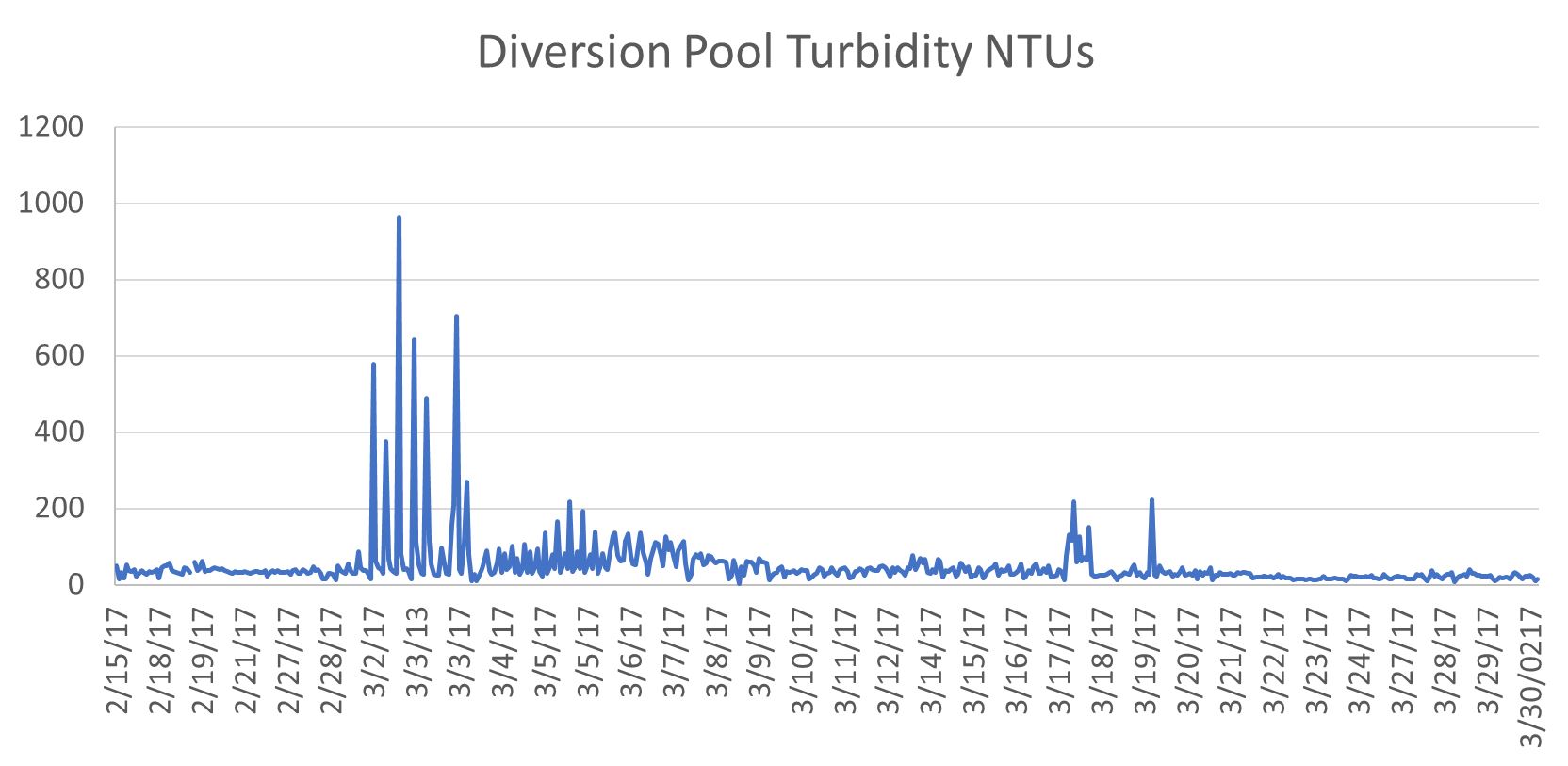Feather River spring-run and fall-run salmon are the backbone of the California salmon fisheries, making up 20-40% of the total catch and spawning runs. In a review of Feather River fall-run Chinook salmon in September 2019, I described their status through the 2018 run and expressed optimism for the 2019 run. My assessment proved overly optimistic, as the 2019 run numbers came in lower than expected. The lower-than-expected returns appear to be the consequence of the 2017 Oroville Dam spillway failures.
The 2019 spawning run (escapement), though improved over the previous four drought-influenced years, was smaller than those of the previous wet-year-influenced periods 2000-2002 and 2012-2014 (Figures 1 and 2). The run of 80,000 adult salmon in 2019 should have been 25-50% higher, because 2017 was a wet year. The 2019 run, the offspring of brood-year 2016 was raised in the river and hatchery in winter 2017 during the events of the February 2017 spillway failures (Figure 3). The 2019 run showed lower hatchery and wild river smolt production due to the the direct and indirect consequences of the spillway failures. Suspended sediment (turbidity) levels during the spillway failures in the river and the hatchery reached highly stressful if not lethal levels (Figures 4 and 5). These levels were elevated through the winter and spring of 2017 due to the dredging of spillway debris from the river immediately below the failed spillway (Figure 6). Lower Feather River flows during the winter and spring were highly erratic (Figure 7) due to efforts to repair the spillway and dredge the debris from the river below the spillway. Rapid flow reductions from the dam led to well-documented stranding of young salmon in the lower Feather River floodplain.1
The prognosis for the 2020 run is mixed. Spawner numbers in 2017 were fair (80,000; Figure 1). Water year 2018 was below-normal, generally leading to poor spawning, rearing, and emigration survival. Hatchery smolt releases in 2018 were increased several million over 2017 releases, which should bode well for the 2020 run. Wild spawning and rearing in fall of 2017 and winter-spring of 2018 still had to contend with the ramifications of the 2017 spillway failures, although some restoration did occur in summer 2017.2

Figure 1. Feather River fall run Chinook salmon escapement (river and hatchery counts 1964-2019.

Figure 2. Feather River Fall-Run Chinook salmon spawner-recruit relationship. Recruits are escapement for that year. Spawners are recruits from three years earlier. Red represents drought conditions during brood year rearing. For example: 2015 represents winter-spring of 2015 when brood year 2014 was rearing and migrating in lower Feather River downstream to the Bay. Blue designates wet year rearing and migrating conditions. Green represents normal years. Note 2017 represents the 2019 escapement from young reared and emigrated in winter-spring conditions in 2017, a wet year.

Figure 3. Oroville Dam main spillway failure in February 2017. Oroville Dam was constructed during 1961-68 period.

Figure 4. Turbidity (NTUs) measured below spillway in lower Feather River in Oroville, February 9-10, 2017.

Figure 5. Photo of emergency spillway use on February 11, 2017.

Figure 6. Turbidity measured in Feather River near spillway recovery efforts in winter 2017. Spikes in turbidity occurred during ongoing dredging and debris removal activities.

Figure 7. Streamflows in lower Feather River at Gridley and lower Sacramento River below mouth of Feather River at Verona, and turbidity at Verona in winter-spring 2017. CDEC data.
- White, J.S.S., K. Lentz, and J. Kindopp. 2017. Stranding of Chinook Salmon (Oncorhynchus tshawytscha) and Steelhead (Oncorhynchus mykiss) in the lower Feather River, 2017. Final Report. Department of Water Resources, Division of Environmental Services, Oroville, CA. ↩
- https://youtu.be/UcAFs3c4tlA , https://youtu.be/hqeN5-qzlDQ ↩
